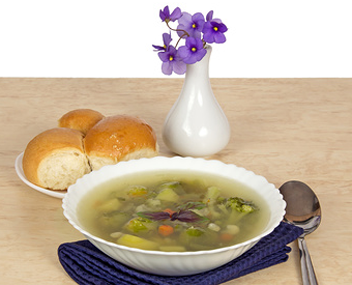What are we cooking?
- Eggs
- Pasta
- Cereals
- A fish
- Meat
- Vegetables
- Seafood
- Mushrooms
- Something else :)
- Porridge
- Soups
- Borscht
- Cabbage soup
- Chicken
- Ear
- Mushroom
- Solyanka
- Green borsch
- Kharcho
- Turnip
- Kulesh
- Shurpa
- Egg soup
- Cheese
- Millet
- Khash
- Herring soup
- Broccoli soup
- Bozbash
- Miso soup
- Buckwheat soup
- Rassolnik
- Rice soup
- Pea puree soup
- Okroshka
- Lentil soup
- Pumpkin soup
- Onion soup
- Chill
- Shulum
- Tom Yam
- Gumbo
- Canned Bean Soup
- Nettle soup
- Minestrone
- Mushroom hodgepodge
- Eintopf
- Tomato soup
- Celery soup
- Botvinha
- Chikhirtma
- Saury soup
- Mashhurda
- Bouillabaisse
- Rhubarb soup
- Dhal
- Canned salmon soup
- Carrot soup
- Lemon soup
- Oxtail soup
- Wild garlic soup
- Vichisoise
- Chorba
- Avgolemono
- Chowder
- Campbell Soups
- Tom Kha Kung
- Tom Kha Kai
- Mussel soup
- Khau tom
- Achiaco
- Ollada
- Fabada
- Shiruko
- Puchero
- Dovga
- Kosido
- Zoni
- Pozole
- Kalya
- Alletta
- Aquacotta
- Tyankonabe
- Noodle soup
- Pea soup
- Barley soup
- Buru-buru
- Straciatella
- Asparagus soup
- Danhuatan soup
- Cullen skin
- Bergen soup
- Fanesque soup
- Buridd soup
- Norwegian fish soup
- Caldu Verde soup
- Chupe soup
- Callalu soup
- Casuela soup
- Choppino soup
- Kok-a-liki soup
- Kalbithan soup
- Kamjakhtan
- Ginestrata
- Lohikeito
- Pancake soup
- Peanut soup
- Pho soup
- Yurma
- Menudo
- Mulligatoni
- Naengmyeon soup
- Bread soup
- Sopa de gato
- Ramen
- Feijoada
- Shark fin soup
- Cherry soup
- Races
- Soto soup
- Cacciucco
- Pork blood soup
- Kakavya
- Tteokguk soup
- Zhur soup
- Chavan mushi
- Shrimp soup
- Kimchi
- Pavese
- Petey
- Sausage soup
- Processed cheese soup
- Salmorejo
- Yoghurt soup
- Khashlama
- Pollock ear
- Milk soup
- Apple soup
- Soyutma
- Flask
- Butter soup
- Soup with zucchini and chicken
- Zucchini and cabbage soup
- Bean puree soup
- Sauerkraut cabbage soup
- Soup
- Barley-mushroom soup
- Lenten borsch
- Beverages
- desserts
- Sausages
- Blanks
How much to cook aquacotta?
 Boil the aquacotta for 1 hour.
Boil the aquacotta for 1 hour.
How to make aquacotta soup
Products
White bread - 12 slices
Potatoes - 3 medium
Cauliflower - 100 grams
Asparagus cabbage (broccoli) - 100 grams
Chicory - 2 tablespoons
Chard - 100 grams
Chili pepper (pepperoncino) - 1 piece
Bow - quarter head
Garlic - 2 cloves
Tomato paste - 60 grams (3 tablespoons)
Olive oil - a tablespoon for each serving
Salt to taste
Water - 1.7 liters
How to cook aquacotta
1. Finely chop fresh or dried chicory, pour boiling water (1 cup) in a saucepan, cook on the lowest heat for 10 minutes.
2. Put the tomato paste, garlic cloves, 1/4 onion, chopped chili into a saucepan.
3. Pour in water (1.5 liters), salt and boil.
4. Put chopped Swiss chard leaves in a saucepan, after 5 minutes - boiled chicory; stir the soup.
5. Coarsely chop the peeled washed potatoes, put them in the soup, boil, cook for 10 minutes.
6. Add cabbage (broccoli and cauliflower), divided into small inflorescences, cook for another 15 minutes.
7. Put two slices of stale bread into plates.
8. Pour the broth on the bread, put the vegetables on the bread, pour generously with olive oil on top.
Fusofacts
- Acquacotta (Italian for "boiled water") - classic thick vegetable soup from the Italian region of Tuscany.- For a long time, Aquakotta was prepared by ordinary people engaged in physical labor - peasants, horse shepherds, woodcutters. The soup included available ingredients: water, stale bread, onions, tomatoes, olive oil, sometimes toasted bacon.
- One of main ingredients aquacotta - wheat bread - is traditionally baked from solid flour without salt. He must be callous. You can use fresh bread after drying it in a dry (no oil) frying pan.
- Chard leaves (type of beet) permissible replace spinach.
- In Florence, there is a restaurant of Tuscan (not to be confused with Italian!) Cuisine called in honor of the soup.
Take a look more soupshow to cook them and cooking time!
Last update Author / Editor - Lydia Ivanova



